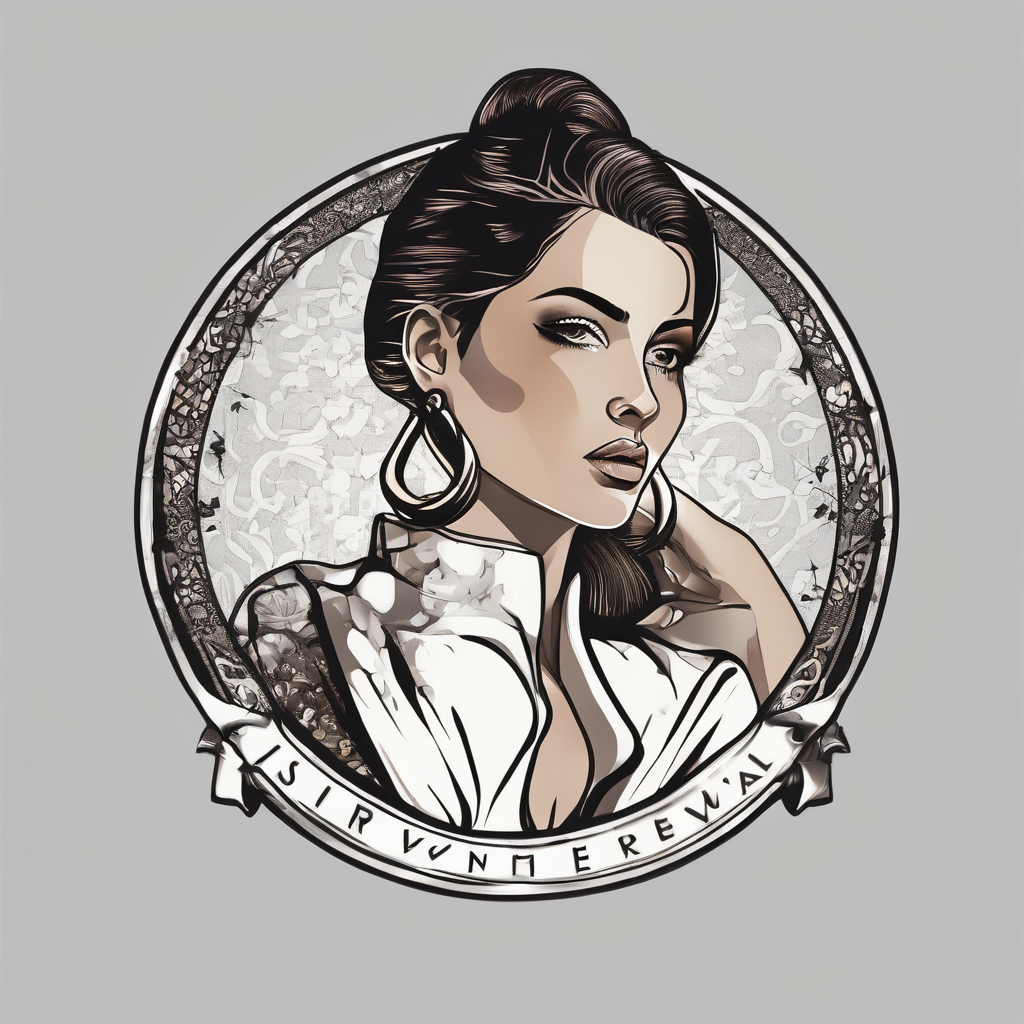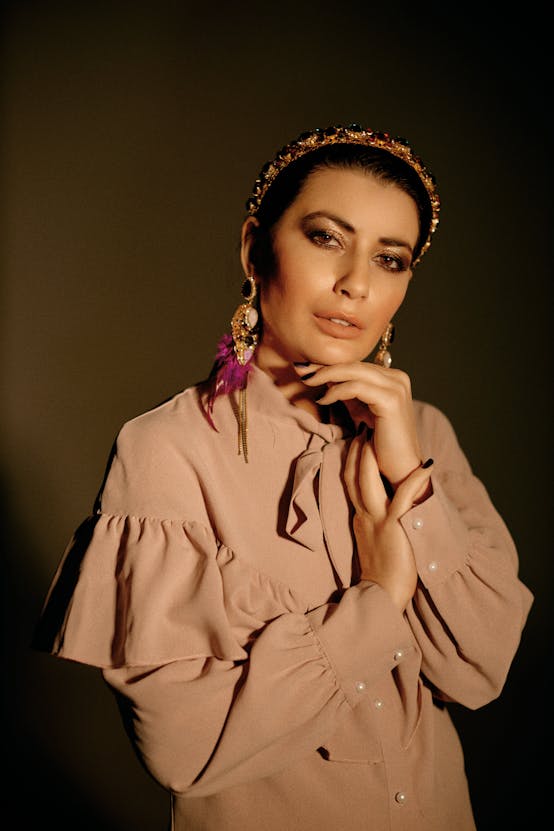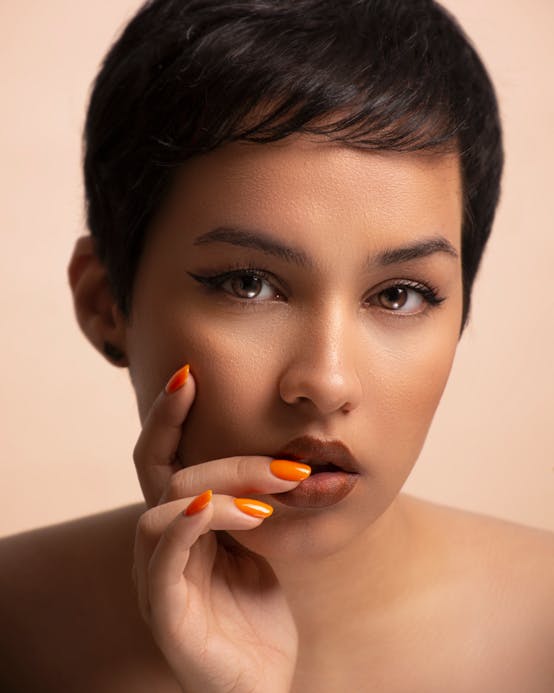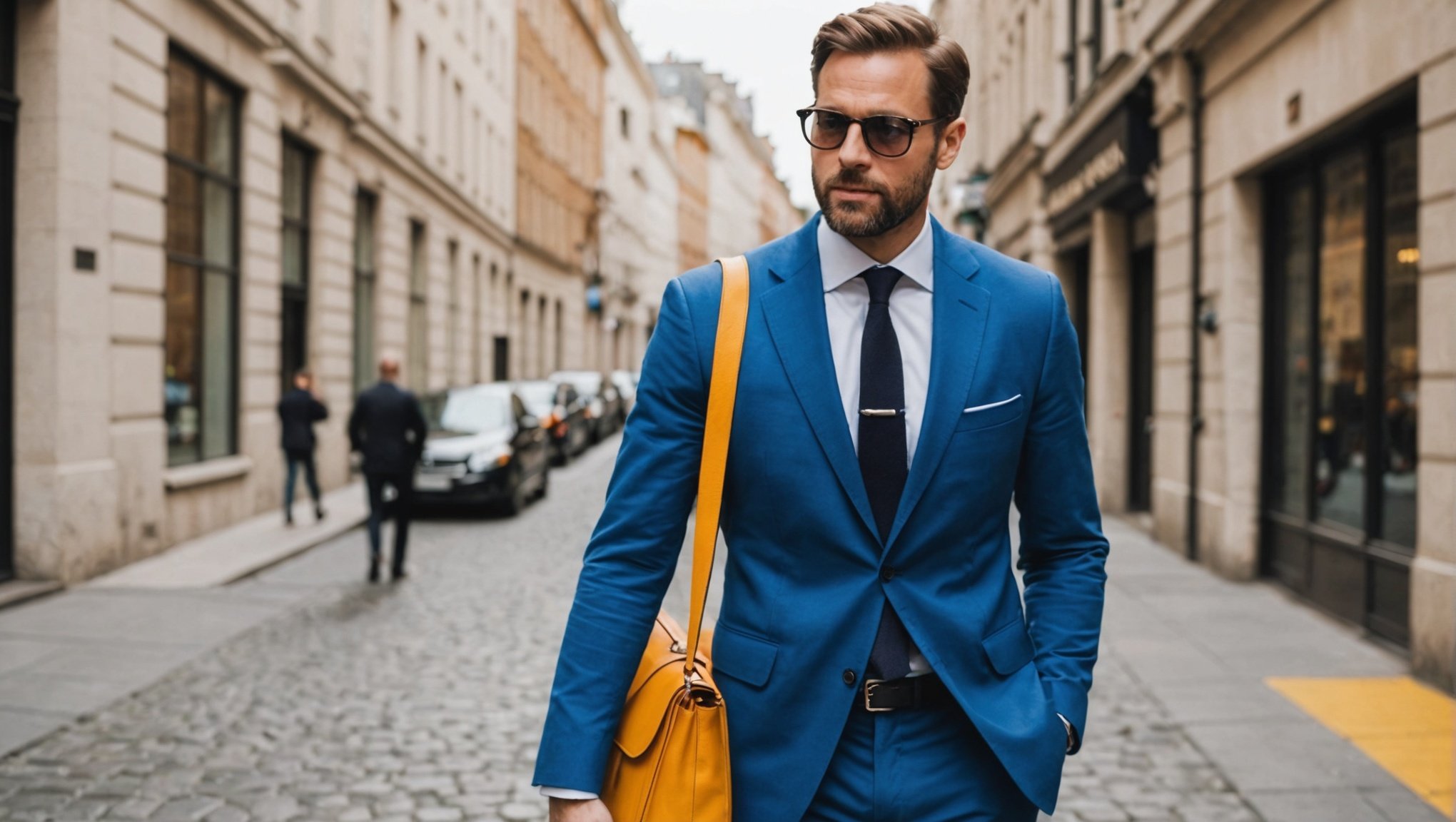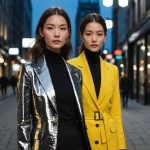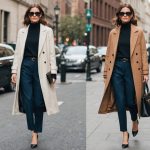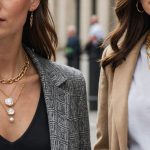Color shapes our perceptions and influences emotions, making it essential in communication. Choosing the right hues for your outfits can enhance your message during key meetings, whether aiming for confidence or approachability. Mastering color theory provides valuable insights that allow for strategic outfit selection. Learn how to effectively harness the power of color to create lasting impressions, improve relationships, and elevate your professional presence. Explore the art of color coordination to make informed decisions that resonate with your audience.
Understanding Color Theory
Color theory is a fundamental aspect of fashion design, influencing how colours are perceived and combined in outfits. It is the study of how colours interact, the emotions they evoke, and the visual effects they create. A solid grasp of color theory basics can enhance one’s ability to create visually appealing ensembles.
Topic to read : Mastering Jewelry Care: Tips to Stop Tarnish in Humid UK Climates
The color wheel is a pivotal tool in understanding color theory. It consists of primary, secondary, and tertiary colors. Primary colors—red, blue, and yellow—are the foundation, as they cannot be created by mixing other hues. Secondary colors, such as green, orange, and purple, result from combining primary colors. Tertiary colors are produced by mixing primary and secondary colors, offering a richer palette for fashion choices.
Color harmony plays a crucial role in outfit selection. It refers to the aesthetically pleasing arrangement of colors, which can be achieved through complementary, analogous, or triadic schemes. Complementary colors sit opposite each other on the color wheel, creating high contrast and vibrant looks. Analogous colors, found side by side, offer a more subdued and harmonious appearance. Triadic schemes use three evenly spaced colors, providing balance and visual interest.
This might interest you : Mastering Makeup: Adapting Your Beauty Routine to the Ever-Changing UK Climate
Understanding these concepts enables fashion enthusiasts to make informed decisions, enhancing their styling prowess.
The Psychology of Color
Understanding color psychology is essential in fashion, as colours can significantly affect perception and emotions. For instance, the colour red is often associated with passion and energy, while blue conveys calmness and trust. These emotional responses can influence how individuals are perceived in various settings.
Impact on Professional Settings
In professional environments, colour choices can communicate authority, competence, and approachability. Darker shades like navy and charcoal are often chosen for business attire due to their association with professionalism and reliability. Conversely, softer colours such as light blue or soft pink can promote openness and friendliness, making them suitable for collaborative settings.
Case Studies in Business Attire
Research in color psychology has demonstrated that specific colours can impact business outcomes. For example, a study found that job candidates wearing blue were perceived as more trustworthy, while those in black exuded confidence. These findings highlight the importance of strategic colour choices in professional attire to enhance personal branding and influence perceptions.
By leveraging color psychology, individuals can make informed decisions that align with their desired image and the emotional responses they wish to evoke. This understanding empowers fashion enthusiasts and professionals alike to craft outfits that not only look appealing but also communicate the right message.
Choosing the Right Colors for Key Meetings
Selecting the appropriate outfit color is crucial for making a favourable impression in key meetings. The choice of colors should align with the meeting’s purpose and your personal brand.
Guidelines for Selecting Colors
For formal meetings, neutral tones such as navy, grey, and black are recommended. These colors convey professionalism and authority, helping you project confidence. On the other hand, creative meetings may benefit from more vibrant hues like teal or maroon, which can stimulate discussion and creativity.
Recommended Color Palettes
- Negotiation Meetings: Opt for powerful colors like dark blue or charcoal, which suggest reliability and competence.
- Client Presentations: Consider softer tones such as light grey or beige to appear approachable and open to dialogue.
- Team Collaborations: Use warm colors like olive or mustard, which can foster a sense of camaraderie and teamwork.
Aligning Colors with Personal Brand
Your outfit color selection should reflect your personal values and professional identity. Consistency in color choices helps reinforce your brand, making you more memorable. For instance, if your brand emphasizes innovation, incorporating bold colors like electric blue can underline this trait. Conversely, if your brand is about trust and stability, sticking to classic tones like navy or burgundy may be more appropriate.
Practical Tips for Outfit Coordination
Navigating the world of fashion can be daunting without effective outfit coordination tips. To master the art of mixing and matching colors, consider the color wheel as your guide. Start by selecting a base color and then choose complementary or analogous colors to create a harmonious look. For instance, pairing a navy suit with a light blue shirt can provide a sophisticated, yet approachable appearance.
Accessorizing plays a pivotal role in enhancing your outfit’s color scheme. A well-chosen tie or scarf can introduce a pop of color, adding interest without overwhelming the ensemble. Opt for accessories that echo the hues of your outfit or introduce a contrasting color for a bold statement.
Understanding seasonal color trends is also key to staying relevant in professional attire. Each season brings a palette of trending colors that can be seamlessly incorporated into your wardrobe. For example, autumn often features rich, earthy tones like burgundy and olive, which can be integrated into your professional attire for a contemporary look. By staying attuned to these trends, you can ensure your outfits remain modern and stylish, reflecting both the time of year and your personal brand.
Examples of Effective Color Combinations
When selecting color combinations for business meetings, understanding successful pairings can elevate your professional presence. Color combinations not only influence perceptions but also enhance personal branding.
Successful Color Pairings for Business Meetings
Incorporating color combinations like navy and white can convey professionalism and trustworthiness, ideal for high-stakes negotiations. A navy suit paired with a crisp white shirt is a classic choice that communicates authority while remaining approachable. For creative settings, consider pairing teal with grey. This combination encourages creativity and innovation, making it perfect for brainstorming sessions or collaborative projects.
Visual Aids Showcasing Outfit Examples
Visual aids can be instrumental in illustrating effective color combinations. For instance, a visual representation of a charcoal suit with a light pink shirt can demonstrate how softer tones can soften the overall look, making it more inviting. These visual aids can serve as inspiration, helping individuals visualize and execute their desired look.
Analyzing Famous Personalities and Their Color Choices
Observing the color combinations of famous personalities can offer valuable insights. Figures like Michelle Obama often use bold colors like red and purple to convey confidence and charisma. Analyzing these choices can provide guidance on how to integrate similar strategies into your wardrobe.
Actionable Strategies for Different Meeting Types
Navigating the world of professional attire requires understanding meeting-specific outfit strategies. Recognising the nature of the meeting is key to selecting the right ensemble.
Dressing for Formal vs. Informal Meetings
For formal meetings, such as boardroom discussions or client negotiations, opt for classic and neutral tones. These colours, like navy or charcoal, convey authority and professionalism. In contrast, informal meetings allow for more flexibility. Here, you can incorporate subtle patterns or softer colours like light grey or pastel shades, which encourage a relaxed atmosphere.
Colour Choices for Presentations and Interviews
When preparing for presentations, consider colours that enhance your visibility and confidence. Bold hues like royal blue or deep green can draw attention, while still maintaining professionalism. For interviews, stick to trusted colours such as navy or black, which are perceived as reliable and competent.
Adapting Outfit Colours for Virtual Meetings
Virtual meetings present unique challenges, as lighting and camera quality can affect colour perception. Choose solid colours that contrast with your background to ensure you stand out. Avoid overly bright or patterned clothing, as they can be distracting on screen. Instead, opt for medium tones like teal or burgundy, which balance visibility and professionalism.
Expert Insights on Color Usage in Professional Attire
Navigating the intricacies of color selection in professional attire can be daunting. To shed light on this, we gathered insights from fashion experts and organizational psychologists.
Fashion experts emphasize the importance of aligning color choices with personal branding and industry norms. For instance, in conservative sectors like finance, sticking to neutral tones such as navy or grey is advisable. In contrast, creative industries allow for more vibrant hues, enabling individuals to express their personality while maintaining professionalism.
Organizational psychologists highlight the psychological impact of color in the workplace. They suggest that wearing colors like blue can foster trust and calmness, making it ideal for client interactions. Meanwhile, red can be used strategically to convey confidence and assertiveness, suitable for leadership roles or negotiations.
Real-world examples from successful leaders further illustrate effective color usage. Steve Jobs, known for his iconic black turtleneck, exemplified how consistent color choices can reinforce personal brand identity. Similarly, former PepsiCo CEO Indra Nooyi often opted for bold colors, which complemented her dynamic leadership style.
By leveraging these expert insights, professionals can enhance their wardrobe choices, ensuring they communicate the desired message and align with their career goals.
Common FAQs about Color Theory and Outfit Selection
Navigating the world of fashion involves understanding color theory, which can be daunting due to common misconceptions. One frequent question is whether bold colors compromise professionalism. The answer is nuanced: while conservative settings may favour neutral tones, creative industries often embrace vibrant hues to express personality without sacrificing professionalism.
Another query revolves around the longevity of color trends. Fashion trends are cyclical, with certain colors resurfacing over time. To balance trendiness with timelessness, incorporate classic colors like navy or black as wardrobe staples, while using accessories to experiment with current trends.
Selecting the right colors for outfits can be challenging. A practical tip is to start with a base color and build around it using the color wheel. For instance, if your base is a navy suit, introduce analogous colors like light blue or teal for a cohesive look.
FAQs about color trends often include questions about seasonal palettes. Each season brings a unique set of trending colors; however, integrating them thoughtfully ensures your wardrobe remains relevant. By understanding these aspects of color theory, individuals can make informed decisions, enhancing both their personal style and professional image.
Visual Aids and Resources
Understanding and applying color theory in fashion can be greatly enhanced with the right visual aids and resources. These tools not only simplify complex concepts but also provide practical applications for everyday styling.
Infographics Illustrating Color Theory Principles
Infographics are an excellent way to visualise color theory principles. They often include the color wheel, showcasing primary, secondary, and tertiary colors, along with examples of complementary and analogous color schemes. By presenting this information visually, infographics help fashion enthusiasts quickly grasp how different colors interact and complement each other.
Online Tools for Color Palette Selection
Numerous online tools are available to assist in color palette selection. These platforms allow users to experiment with different color combinations, offering suggestions based on color harmony and current trends. Tools like Adobe Color or Coolors can be particularly helpful for those looking to create cohesive and stylish outfits.
Recommended Books and Articles for Further Reading
For those seeking a deeper understanding, several books and articles delve into the intricacies of color theory. Titles such as “Interaction of Color” by Josef Albers provide comprehensive insights into the psychological and emotional impact of colors, enhancing one’s ability to make informed fashion choices.
